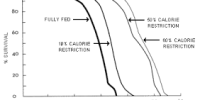Endometrial cancer is a type of cancer that begins in the uterine lining, known as the endometrium. It is a type of cancer that develops from the endometrium (the uterine or womb lining). It is caused by the abnormal growth of cells that have the ability to invade or spread to other parts of the body. It is the most common type of uterine cancer and typically affects postmenopausal women, though it can also affect premenopausal women.
The first sign is usually vaginal bleeding that is not associated with a menstrual period. Other symptoms include urination pain, pain during sexual intercourse, and pelvic pain. Endometrial cancer is most common after menopause.
Risk Factors:
Several factors may increase the risk of developing endometrial cancer:
- Age: The risk increases with age, and most cases occur in women over 60.
- Hormonal Factors: Hormonal imbalances, such as an excess of estrogen without progesterone, can increase the risk.
- Obesity: Being overweight or obese is a significant risk factor.
- Reproductive Factors: Women who have never been pregnant or who had their first menstrual period before the age of 12 are at a higher risk.
- Family History: A family history of endometrial or colorectal cancer may elevate the risk.
Symptoms
Endometrial cancer is sometimes loosely referred to as “uterine cancer”, although it is distinct from other forms of uterine cancer such as cervical cancer, uterine sarcoma, and trophoblastic disease. The most frequent type of endometrial cancer is endometrioid carcinoma, which accounts for more than 80% of cases.
- Abnormal Vaginal Bleeding: The most common symptom is abnormal bleeding, especially after menopause.
- Pelvic Pain: Pain in the pelvis may occur in advanced stages.
- Painful Urination or Intercourse: These symptoms can occur if the cancer has spread to nearby tissues.
- Unintentional Weight Loss: In advanced cases, weight loss may occur.
Diagnosis and Treatment
Endometrial cancer is commonly diagnosed by endometrial biopsy or by taking samples during a procedure known as dilation and curettage. A pap smear is not typically sufficient to show endometrial cancer. Regular screening in those at normal risk is not called for.
- Biopsy: A biopsy of the endometrial tissue is the definitive way to diagnose endometrial cancer.
- Imaging Tests: Imaging studies such as ultrasound, CT scans, or MRI may be used to determine the extent of the cancer.
- Staging: Staging helps determine the extent of cancer spread and guides treatment decisions.
- Treatment Options: Treatment may include surgery (hysterectomy), radiation therapy, chemotherapy, or hormone therapy, depending on the stage and characteristics of the cancer.
- Follow-Up Care: Regular follow-up visits are important to monitor for recurrence and manage any side effects of treatment.
Prevention
- Maintain a Healthy Weight: Obesity is a significant risk factor, so maintaining a healthy weight can lower the risk.
- Hormone Therapy: If prescribed hormone replacement therapy, it should include both estrogen and progesterone in postmenopausal women.
- Reguar Exercise: Physical activity is associated with a reduced risk of endometrial cancer.
- Healthy Diet: A diet rich in fruits, vegetables, and whole grains may contribute to a lower risk.
Obesity is responsible for approximately 40% of cases. Endometrial cancer is also linked to an excess of estrogen, high blood pressure, and diabetes. Whereas estrogen alone raises the risk of endometrial cancer, combining estrogen and a progestogen, as in most birth control pills, lowers the risk. Between 2% and 5% of cases are caused by genes inherited from one’s parents.
















